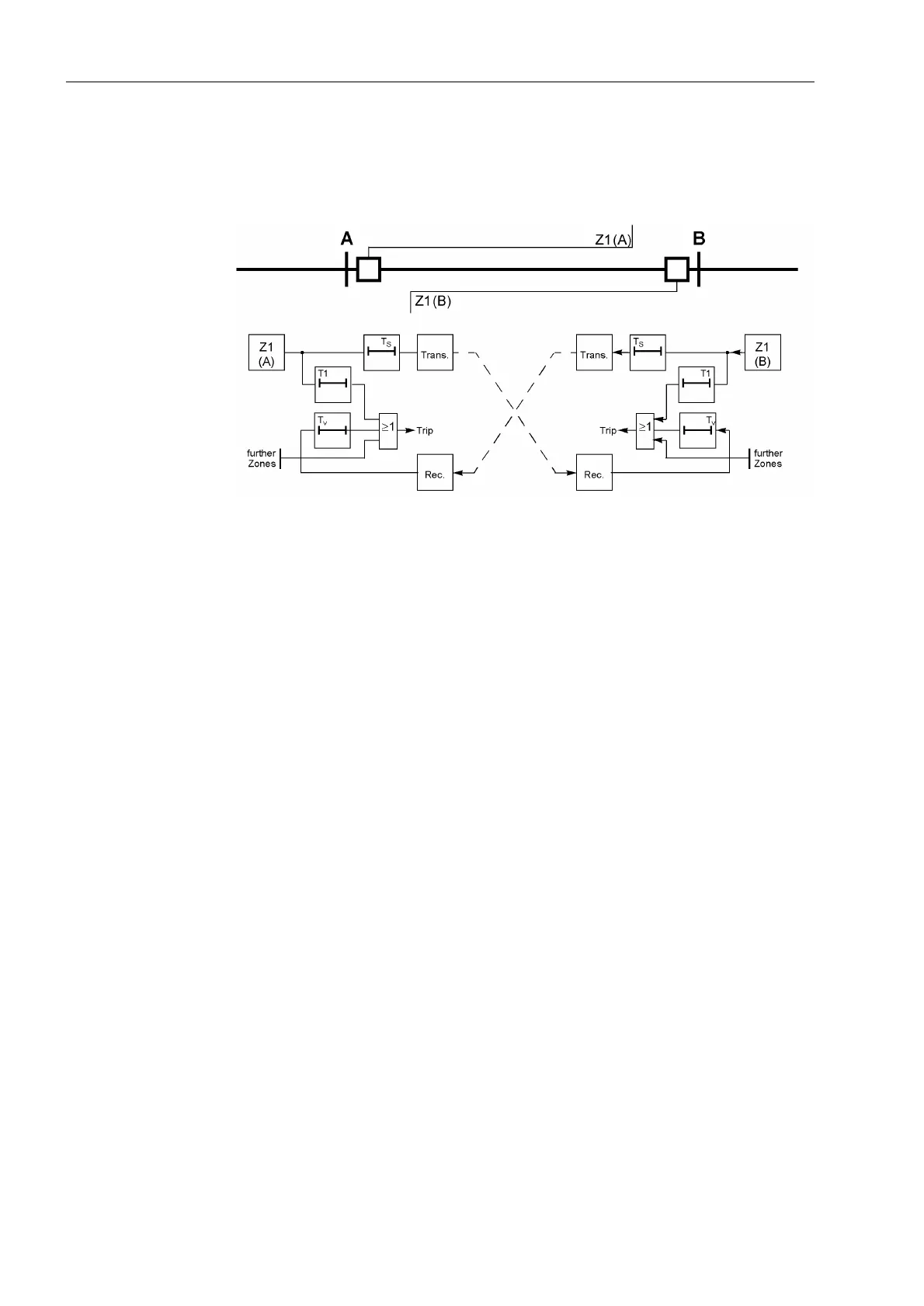2 Functions
132
7SA522 Manual
C53000-G1176-C155-3
On two terminal lines, the signal transmission may be phase segregated. On three ter-
minal lines, the transmit signal is sent to both opposite line ends. The receive signals
are then combined with a logical OR function.
Figure 2-50 Function diagram of the direct underreach transfer trip scheme
2.6.5 Permissive Overreach Transfer Trip (POTT)
The following procedure is suited for both conventional and digital transmission media.
Principle The permissive overreach transfer mode uses a permissive release principle. The
overreaching zone Z1B, set beyond the opposite station, is decisive. This mode can
also be used on extremely short lines where a setting of 85% of line length for zone
Z1 is not possible and accordingly selective non-delayed tripping could not be
achieved. In this case however zone Z1 must be delayed by T1, to avoid non selective
tripping by zone Z1 (Figure 2-51).
If the distance protection recognizes a fault inside the overreaching zone Z1B, it ini-
tially sends a release signal to the opposite line end. If a release signal is received
from the opposite end, a trip signal is forwarded to the trip logic. A prerequisite for fast
tripping is therefore that the fault is recognized inside Z1B in the forward direction at
both line ends. The distance protection is set such that the overreaching zone Z1B
reaches beyond the opposite station (approximately 120% of line length). On three ter-
minal lines, Z1B must be set to reliably reach beyond the longer line section, even if
there is an additional infeed via the tee point. The first zone is set in accordance with
the usual grading scheme, i.e. approximately 85% of the line length; on three terminal
lines at least beyond the tee point.
The transmit signal can be prolonged by T
S
(settable under address 6HQG
3URORQJ). The prolongation of the send signal only comes into effect if the protec-
tion has already issued a trip command. This ensures release of the opposite line end
even when the short circuit has been switched off rapidly by the independent zone Z1.
For all zones except Z1B, tripping results without release from the opposite line end,
allowing the protection to function with the usual grading characteristic independent of
the signal transmission.
For this procedure, transmission via a protection data interface (if provided) is offered.

